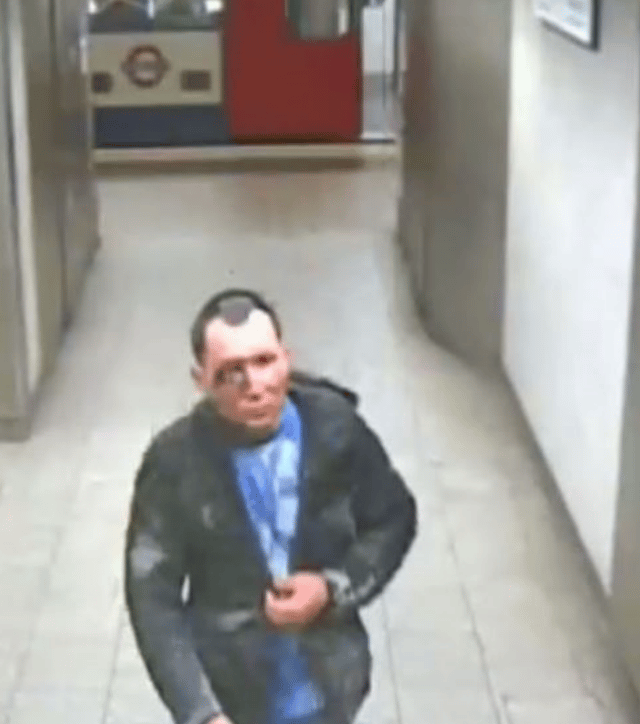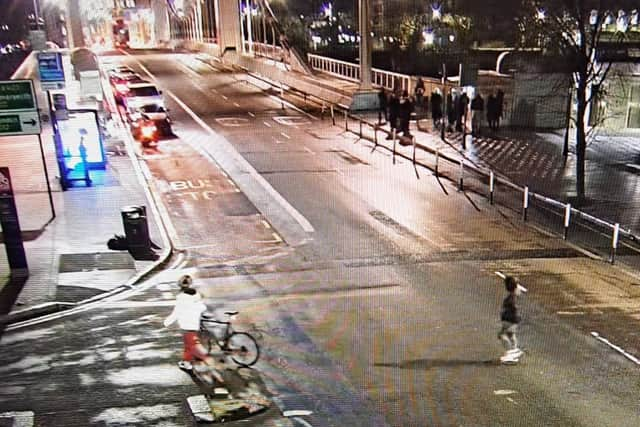Abdul Ezedi: Clapham chemical attack suspect may have 'gone into' River Thames, Met Police says
and live on Freeview channel 276
Clapham chemical attack suspect Abdul Ezedi may have died after 'going into' the River Thames, said the Metropolitan Police. The force said this is their main working hypothesis as their manhunt enters the 10th day.
However, the police said, his body has yet to be found. In a briefing at Scotland Yard, Commander Jon Savell said: “We have spent the last 24 hours meticulously following the CCTV, and it’s our main working hypothesis that he’s now gone into the water.
Advertisement
Hide AdAdvertisement
Hide Ad“We have looked at all of the available cameras and angles, and with the assistance of Transport for London and CCTV from buses that were travelling over the bridge at the relevant time and there is no sighting of him coming off the bridge.”
He added: “At this time of year, the Thames is very fast flowing, very wide and full of lots of snags. It is quite likely that if he has gone in the water, he won’t appear for maybe up to a month and it’s not beyond possibility that he may never actually surface.”
Officers were called to Lessar Avenue in Lambeth at about 7.25pm on Wednesday (January 31) after the corrosive substance was thrown at a group of people. Those injured by the substance include four adults, two children and three police officers.


Ezadi, an Afghan refugee, sustained a "significant injury to the right side of his face", and was last seen in the area of Caledonian Road in north London after attempting to make off in a car. However, he collided with a stationary vehicle, and then made off on foot, in the direction of Clapham Common.
Advertisement
Hide AdAdvertisement
Hide AdIt was later revealed that the woman injured when she was doused with a corrosive liquid in south London had been in a relationship with her suspected attacker, and this may have been a motive for the attack, police said.
Ezedi's last known movements were made public on Thursday (February 8), prior to being captured on CCTV crossing Chelsea Bridge shortly before midnight on the evening of the horrific attack, in which the 31-year-old woman’s daughters, aged three and eight, were also hurt.
At 9.33pm on January 31, he was spotted exiting Tower Hill Underground station - which is served by the Distric and Circle London Tube lines. Exactly 21 minutes later, he was captured on CCTV walking along Upper Thames Street, while 10 minutes after that he began heading towards Victoria Embankment.


At 10.36pm, Ezedi walked across Westminster Bridge, before walking along Albert Embankment, crossing Vauxhall Bridge, then turning onto Grosvenor Road at 11.03pm.
Advertisement
Hide AdAdvertisement
Hide AdDetective Superintendent Rick Sewart said: “We’ve tracked Ezedi’s movements from the Tower Hill area where he alighted the underground and he’s walked over four miles to the location of Chelsea Bridge. He’s walked with purpose, but has essentially hugged the Thames River line.
“When he has got to the area of Chelsea Bridge, his behaviour visibly appears to change in so much as he walked up and down the bridge – he pauses in the midpoint of the bridge, halfway down the bridge. Then he walked to and from the side of the bridge and can be seen to sort of lean over the railings before there is a loss of sight.”
Mr Sewart added that this was consistent with “him going into the water”.
It was reported that Ezedi, came to the UK hidden in a lorry in 2016 and was turned down twice for asylum before successfully appealing against the Home Office rejection by claiming he had converted to Christianity. He was convicted of two sexual offences in 2018 but was allowed to stay in the UK because his crimes were not serious enough to meet the threshold for deportation.
Advertisement
Hide AdAdvertisement
Hide AdIt is understood that a tribunal judge ruled in favour of his asylum plea in 2020 following testimony from a retired Baptist church minister who attested to Ezedi's sincere commitment to his new religion. On Wednesday a Baptist church in Tyne and Wear, where Ezedi is believed from, confirmed it was aware of a “connection” it had with the suspect.
The victim of the Clapham alkali attack is also “very poorly and unable to speak to police”. Mr Savell said: “Our thoughts obviously still remain with our victim who still is very poorly and unable to speak to police.”
He added that police had received more than 500 phone calls into their lines on the investigation, executed eight warrants – three of which were armed, and assimilated more than 1,000 pieces of information on the case.
Comment Guidelines
National World encourages reader discussion on our stories. User feedback, insights and back-and-forth exchanges add a rich layer of context to reporting. Please review our Community Guidelines before commenting.
